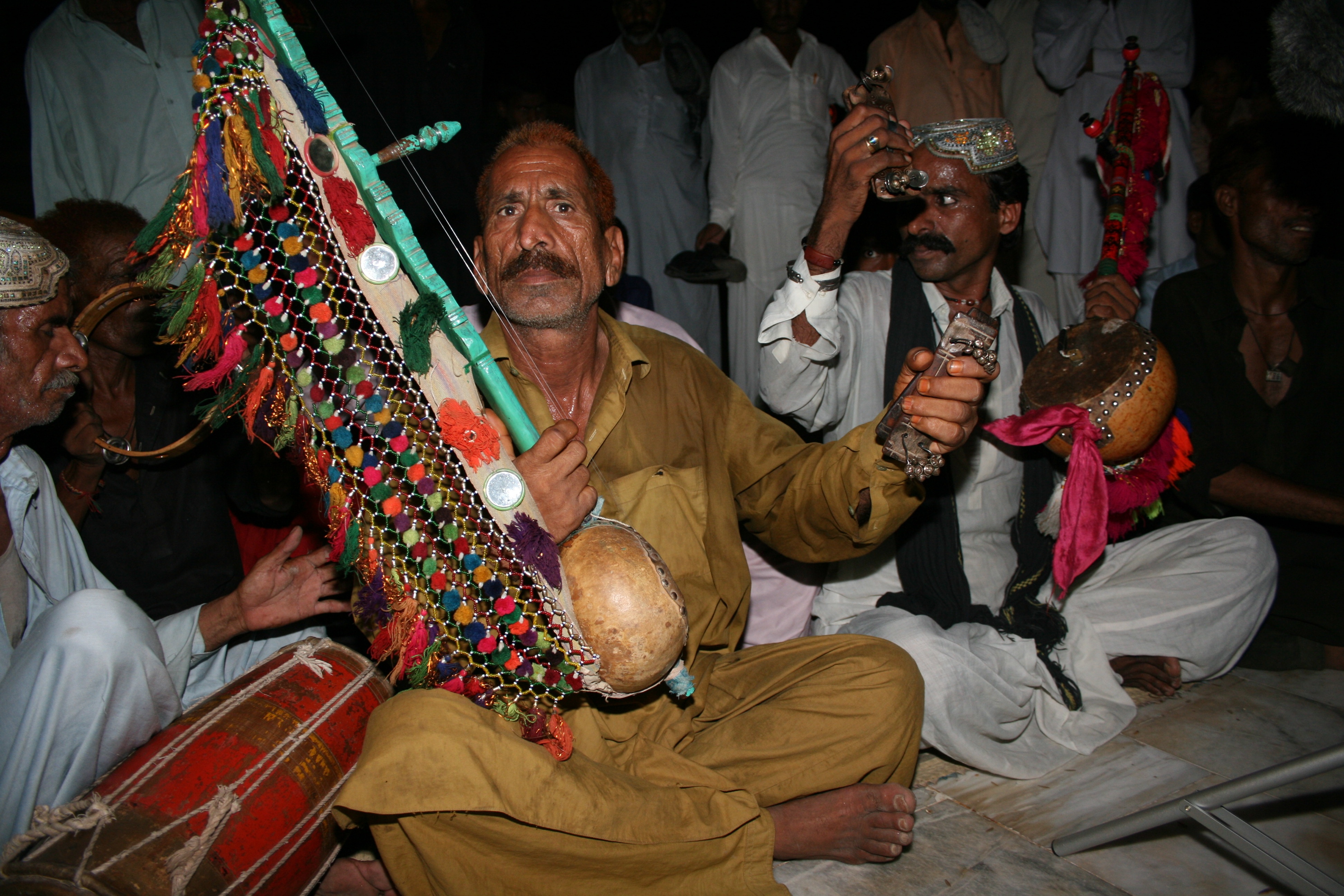
|
Musical Instruments in Pakistan (Sindh/Indus Valley) As a country with the sixth largest population in the world (140 million inhabitants) it is extremely difficult to select a region for music research and collection to be represented in an exhibition. In July 2009 Rolf Killius visited the Sindh province and Karachi in Pakistan, where he collected musical instruments and recorded musical performances for the Musical Instrument Museum in Phoenix, Arizona. There the professional singers and musicians of the Sufi shrine Shah Abdul Latif Bhitai in Bhitshah guided him. For many reasons it seems justified to start a Pakistani research project in Sindh: the river Sindhu (or Indus) is the most important river delta in Pakistan connecting south and north; it could be regarded as the ‘jugular vein’ of Pakistan. The river hosts some of the earliest remains of human cultural activities (such as Mohenjo Daro and Harappa). From early times this valley has been a confluence of community religions, Hindu and Islamic belief systems with the result of producing a very sophisticated musical culture (and has established a relative peaceful neighbourhood for all these different communities). Though Pakistan is culturally an extremely diverse country the Sindh region traditionally shows coherence between the different prevalent musical cultures. Most of the musically relevant Sufi shrines (such as Bhitshah and Sehwan) are situated in the Sindh valley. Finally, Sindh shows an interesting folk-classic continuum, which seems typical for other parts of Pakistan. Unlike most of the news about Pakistan, the life in most parts of Sindh, influenced by Sufi shrines, is a haven of tolerance and peace. Muslims of all denominations, Hindus, and Christians visit the shrines of the Sufi mendicants where the professional musicians and singers spread their peaceful messages at the highest musical levels. |


